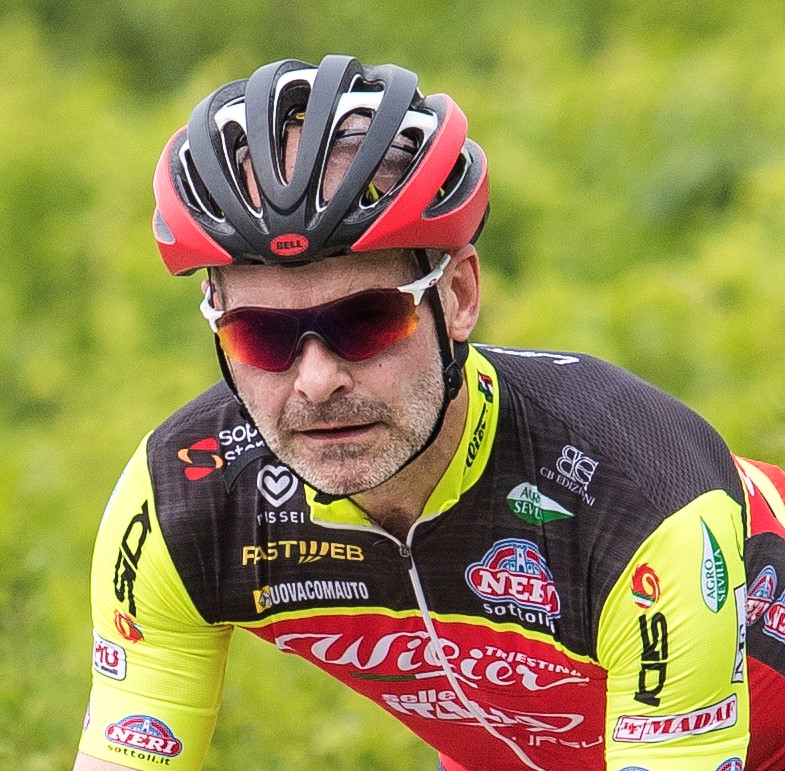Last Friday, SRAM announced it is taking legal action against the UCI, in a dispute over the cycling governing body’s proposed maximum gearing protocol.
The protocol’s objective is to limit speeds achieved by riders and hence improve rider safety, following a number of high-profile fatalities when descending at speed in races, most notably those of Gino Mäder and Muriel Furrer, both last year.
The UCI refers to the new protocol as a “test” at a single race, the Tour of Guangxi, taking place in China in mid-October, although it says additional events may follow.
Banned gearing

The number for the maximum gearing is 10.46 metres of forward motion per pedal revolution. It’s a figure that’s dependent on the bike’s gearing, but also the tyre width (and hence its circumference).
In real terms, this means the maximum gear a cyclist could use in a race would be a 54x11-tooth, when paired with a 28mm-wide tyre.
And therein lies the problem. SRAM (and Campagnolo with the launch of its Super Record 13 groupset) produces cassettes that start at 10 teeth, and SRAM’s pro riders often opt for a crankset with a 54-tooth outer chainring. Under the new rules, this combination would be banned.
The UCI’s solution? Make pro teams block off the 10-tooth sprocket, so they can’t use it, reducing their 12-speed groupsets to 11-speed.
So why is SRAM taking legal action against the UCI?

SRAM has filed a complaint with the Belgian Competition Authority (BCA), which has in turn launched anti-trust proceedings against the UCI.
The basis of SRAM’s complaint is that it is the only major manufacturer whose current pro team gearing will be blocked by the new regulation. Shimano cassettes still have an 11-tooth smallest sprocket and are paired with a 54/40t crankset. Campagnolo currently only supplies Team Cofidis and its Super Record 13 groupset offers cassettes with 11-tooth smallest sprockets as well as 10-tooth ones.
So, according to SRAM, the regulations “hinder innovation, limit rider choice, and unfairly disadvantage SRAM riders and SRAM”. It reckons it would take years to engineer a drivetrain that conformed to the UCI’s regulation.
“Lack of transparency and collaboration”
SRAM says the UCI leadership has refused to engage with it, over multiple attempts, and that “the lack of transparency and collaboration left legal action as the only remaining path forward”.
It claims that its gearing “has been publicly labeled as non-compliant, creating reputational damage, market confusion, team and athlete anxiety, and potential legal exposure”.
It further claims that the new ruling was made without any consultation, transparency, supporting evidence or safety justification and distorts competition.
An open letter from SRAM’s CEO
SRAM’s CEO, Ken Lousberg, published an open letter explaining why the company filed a formal complaint with the BCA.
In the letter, Lousberg wrote: “The UCI’s new Maximum Gearing Protocol is set to restrict the equipment many of you rely on to ride and race at your best. It limits choice, stifles innovation, and unfairly targets SRAM riders – and SRAM itself.”
“We’ve tried to engage the UCI, cycling’s governing body, in good faith, but our concerns went unheard. That’s why we’ve taken legal action – not just to protect SRAM, but to protect the right to compete on equal footing.”
“We’re not asking for much. We simply want our racers to compete on a level playing field, and for the industry to be recognized and included as a core stakeholder – working together to make our sport safer for athletes and more inspiring for fans," the letter went on.
Focus on course design

SRAM says it crunched the numbers for the 2025 Tour de France and found that crashes on descents were rare, and that there was no correlation between higher gearing and crash risk.
SRAM claims better course design will do more to improve rider safety – and it’s not alone in this belief.
Dan Bigham, head of engineering at Red Bull – Bora – Hansgrohe, presented his research into gearing restrictions at the Science and Cycling Conference in Lille earlier this year.
Bigham said the restrictions would have no impact on the speed of the peloton, so they would not improve safety.
Instead, Bigham proposed four pillars to focus on: course design, bike design, rider protection and medical response.
“We have the power to make changes. But restricting gear ratios simply distracts from making meaningful changes to rider safety,” said Bigham.
The UCI responds twice
On Saturday 20 September, a day after SRAM’s announcement, the UCI expressed concern over the BCA’s announcement that it had opened an investigation.
The UCI said in an official press release that it was “puzzled by the issuance of the Belgian Competition Authority’s press release before the UCI has even been served with the complaint and by the obvious inaccuracies contained in this statement”.
The UCI also issued a second statement in response to SRAM's press release, where it defended its test at the Tour of Guangxi.
“The UCI reiterates that all its technical regulations, including the protocol for testing maximum gear ratios, are developed in the best interests of cycling, athlete safety, and fair sport. These rules are the result of a consultation process involving stakeholders in the sector, including teams, riders, and organisers,” the UCI said.
“[T]he UCI questions SRAM's objectives in opposing a test designed to assess the relevance of a safety enhancement measure, thereby undermining the necessary unity among cycling stakeholders, which is essential for progress toward a safer sport,” the statement concluded.





